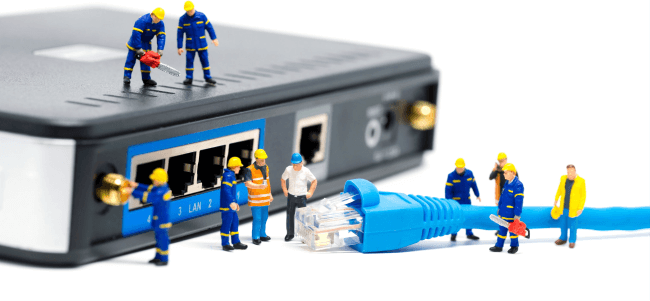What is the full form of MODEMMODEM: Modulator and DemodulatorModem stands for modulator and demodulator. It is a network device between the computer system and the telephone line. The modem consists of two parts which are the modulator and the demodulator. The primary function of the modulator part of any modem is to convert all the digital signals received into analogue signals. The demodulator works just opposite the modulator as it converts all the analogue signals to digital signals. In simple language, when the sender sends any data, it is in the form of a digital signal; when these digital signals reach the modulator of the modem, the modulator converts those digital signals into an analogue signal. These analogue signals are transmitted to the demodulator through a telephone line, and then the demodulator converts these analogue signals again into digital signals and sends them to the receiver. 
Features of Modem1. SpeedModem speed is decided or calculated by the rate at which it converts the received digital signals into analogue signals. This rate of conversion or modem speed helps in identifying a better and faster modem for personal or business use accordingly. The speed of the modem is usually measured in bits per second (bps). However, it can also be calculated in other forms of bps, such as Kbps, Mbps, Gbps, etc. There are different types of modems, and all of them have different speeds. For example, 2400bps, 56kbps, etc. 2. Self TestingOne of the unique features of a modem is that it can check the analogue and digital connection automatically. It means that when two computers are connected, they are connected using digital signals, and the modem can test it. Similarly, when one modem is connected to another, they are connected in a similar structure over analogue signals, and the modem can test the connection as well. 3. Voice Over DataThe modem also allows voice conversation while transferring the data from sender to receiver. For example, the DSL (digital subscriber line) modem that is used these days allows its users to have telephonic calls while sharing the data, enabling users to use the internet at the same time. Types of ModemThe types of modems can be divided on the basis of their shape and size. They are usually categorized into the following three types:- 1. External Modem
2. Internal Modem
3. Wireless Modem
Next TopicFull Form
|
 For Videos Join Our Youtube Channel: Join Now
For Videos Join Our Youtube Channel: Join Now
Feedback
- Send your Feedback to [email protected]
Help Others, Please Share










